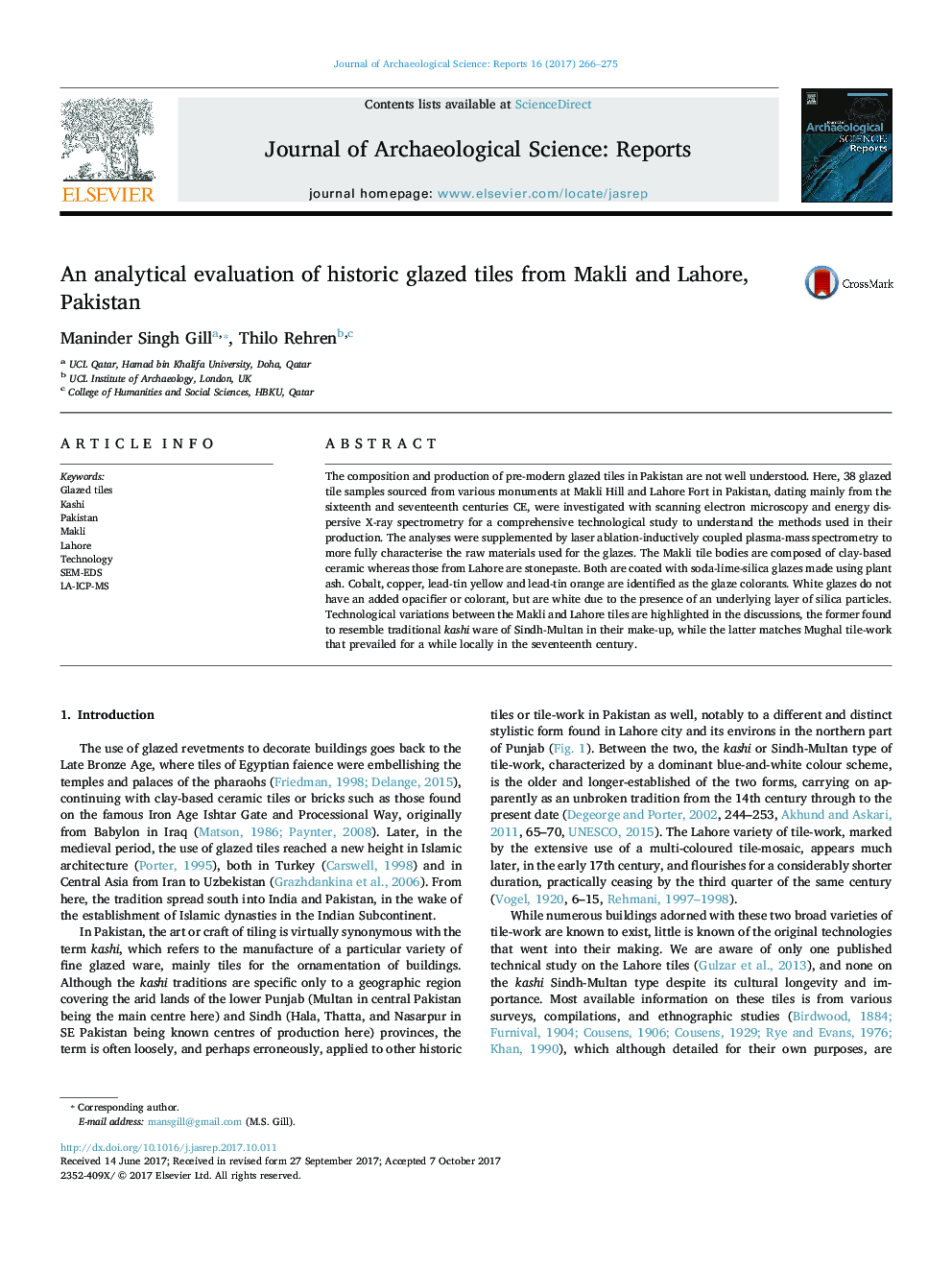| Article ID | Journal | Published Year | Pages | File Type |
|---|---|---|---|---|
| 5112170 | Journal of Archaeological Science: Reports | 2017 | 10 Pages |
Abstract
The composition and production of pre-modern glazed tiles in Pakistan are not well understood. Here, 38 glazed tile samples sourced from various monuments at Makli Hill and Lahore Fort in Pakistan, dating mainly from the sixteenth and seventeenth centuries CE, were investigated with scanning electron microscopy and energy dispersive X-ray spectrometry for a comprehensive technological study to understand the methods used in their production. The analyses were supplemented by laser ablation-inductively coupled plasma-mass spectrometry to more fully characterise the raw materials used for the glazes. The Makli tile bodies are composed of clay-based ceramic whereas those from Lahore are stonepaste. Both are coated with soda-lime-silica glazes made using plant ash. Cobalt, copper, leadâtin yellow and leadâtin orange are identified as the glaze colorants. White glazes do not have an added opacifier or colorant, but are white due to the presence of an underlying layer of silica particles. Technological variations between the Makli and Lahore tiles are highlighted in the discussions, the former found to resemble traditional kashi ware of Sindh-Multan in their make-up, while the latter matches Mughal tile-work that prevailed for a while locally in the seventeenth century.
Related Topics
Social Sciences and Humanities
Arts and Humanities
History
Authors
Maninder Singh Gill, Thilo Rehren,
